Bethel University – Lehman Family Training Center
Bethel Lehman Family Training Center designed by Design Collaborative in Indiana is a state-of-the-art facility integrating movement elements, high-end equipment, and efficient design to support track and field athletes’ training needs.
The Bethel Lehman Family Training Center was designed as a state-of-the-art training facility for track and field athletes, as well as 30 other sports teams on campus. Bethel University’s track & field teams hold several national titles and were looking for a space that would allow them to train together for practices. With high-end training equipment, 6 sprint track lanes, 2 pole vaulting areas, 1 high jump area, 1 throwing area for shot put and hammer throw, a sand pit for long jump, and a 100-meter sprint track that can be extended, the athletes have everything they need to train together and work towards more national titles.
Movement and motion are key design elements incorporated into the building.
As you walk up to the Training Center, a gentle angle of windows and brick mimics the motion of a runner taking off from the starting block.
The brick ties the building into the aesthetic of the campus, while the unique design gives the Training Center its own identity. A wall of tall windows opens up into the pole vaulting and cardo/weight training area, bringing in natural light for the athletes and shining like the beacon of a lighthouse, reminiscent of the campus’s nautical theme. The wall on the other side of the building is closed to keep the glare out.
Entering into the Training Center, you see bright, welcoming graphics in Bethel University’s royal blue, coordinated by DC’s graphic designer and the Bethel graphics team.
A comfortable sitting area that is a combination of stairs and bleachers leads up to a mezzanine with a lounge and space for coaches to observe the athletes.
The design of the project was intended to be efficient without sacrificing any functionality.
Engineering height clearances were made to provide pole vaulting space but to stay under cost. Lighting layouts were strategically chosen to be more efficient. Design was improved because each element was so carefully considered in order to have the best functionality aligned with efficiency.
Design: Design Collaborative
Photography: Al Ensley

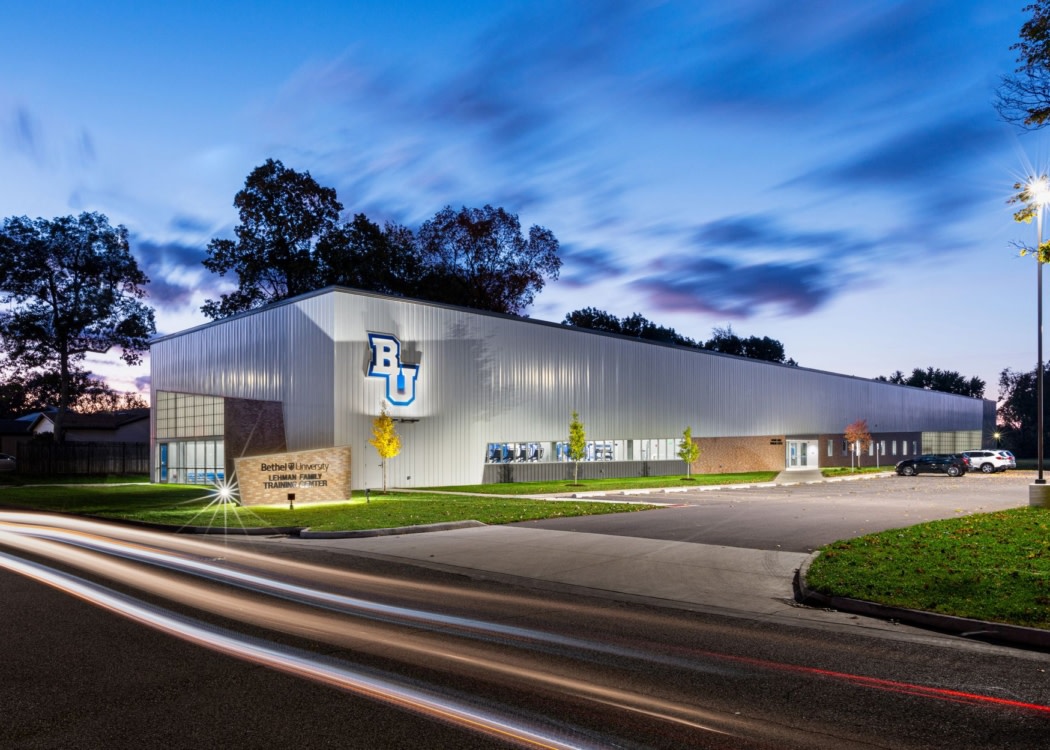
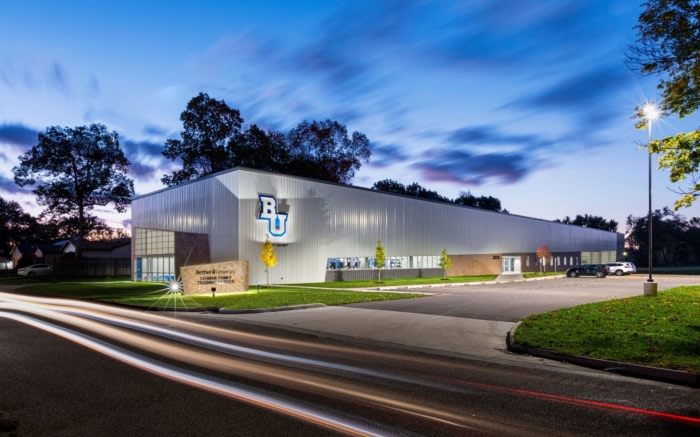
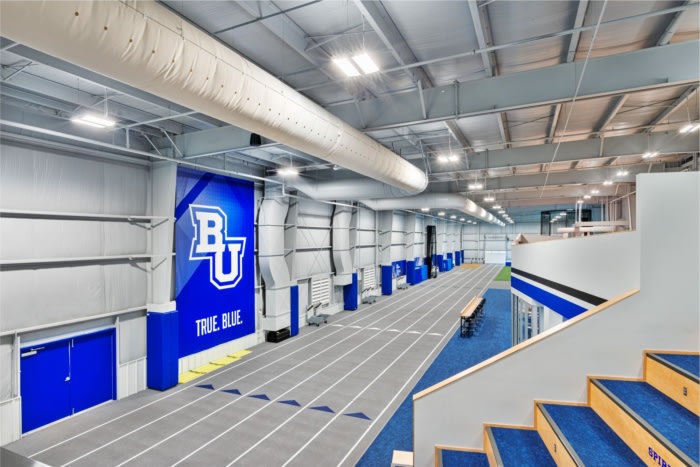

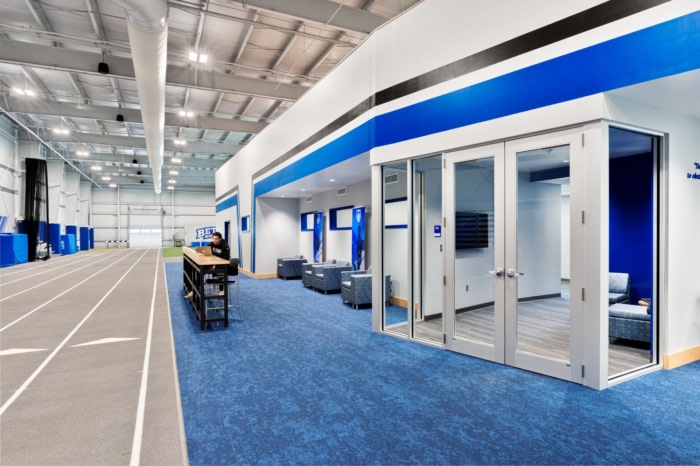
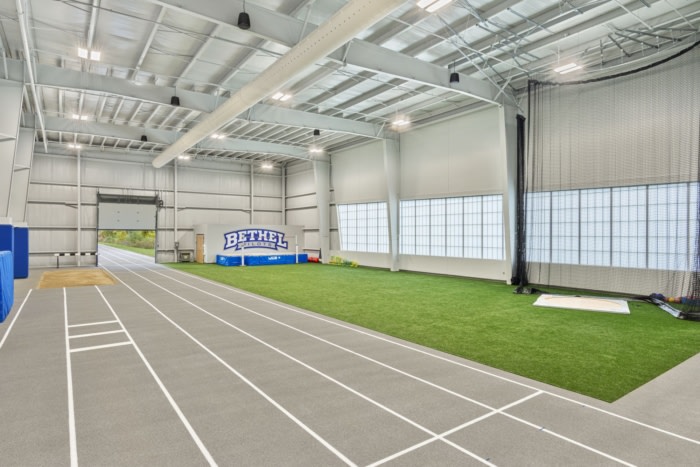
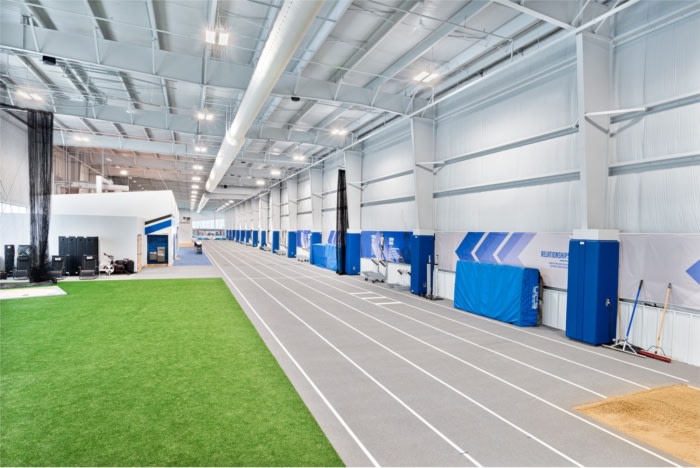

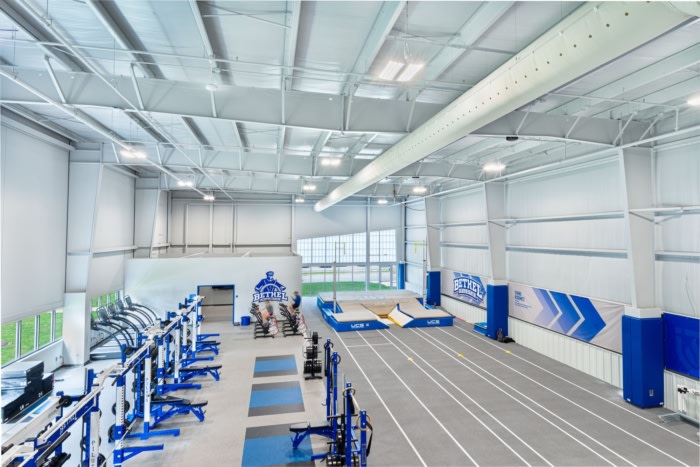
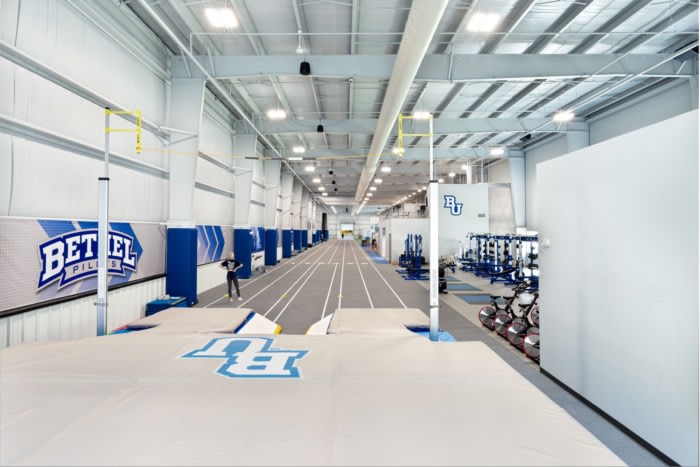





Now editing content for LinkedIn.